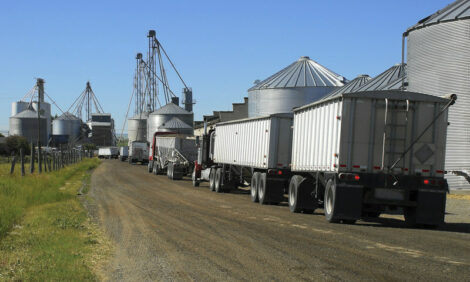Checking nutrient flow: Researchers track manure nutrient path through fields
GUELPH - Agricultural field runoff is difficult to track, but University of Guelph researchers are looking for new ways to determine how these nutrients travel with water from the field.
|
Need a Product or service?
|
|

With the recent implementation of the Ontario Nutrient Management Act - which provides standards for all nutrients being applied to fields - Prof. John Lauzon of the Department of Land Resource Science is testing several manure application methods to see how nutrients and bacteria are carried through soil.
"Keeping excess nutrients from surface and groundwater is the primary focus of new legislation to reduce nutrient losses," says Lauzon. "Now we must further develop our current management systems to minimize these losses."
To find out how water behaves and moves through soil under different management systems, Lauzon and his research team have fitted 20 plots with tile drain monitors, wells and water collection pans at the Elora Research Station. They will regularly collect water from three main sources: the water table, surface runoff and just below the root zone.
By comparing late spring application - which is thought to be superior for reducing nutrient leaching - to variations on fall application with and without tillage over the next year, they hope to help develop protocols for better manure management.
Water that leaves the plant's root zone can take nitrogen, phosphorous and microorganisms - including E. coli bacteria from manure - with it. Researchers say water descending quickly through soil uses larger gaps called bypass flow, and is more likely to contain phosphorous and bacteria than water percolating through the denser soil matrix.
Soil moisture also plays a part in movement of nutrients by controlling how much rainwater will penetrate the soil surface, says Lauzon. They will test the soil's water content twice daily at various depths to see how nutrients collected in soil traveled - by matrix or bypass flow.
By better understanding the way nutrients and bacteria travel through soil and soil management's influence on transport, Lauzon hopes to develop management practices to help farmers reduce their nutrient losses.
Other members of the research team include Profs. Michael Goss, Richard Heck and Gary Parkin, research associates Dave Fallow and Krista Barfoot Kinsie, and graduate students Stephen Crittenden and Andrew Olinski, all from the Department of Land Resource Science. Also involved is Ontario Ministry of Agriculture and Food soil fertility specialist Keith Reid.
This research is being sponsored by Canadian Water Network, the Canada Foundation for Innovation, Ontario Cattlemen's Association, Ontario Pork and the Ontario Ministry of Agriculture and Food.
For more information, contact Jean Howden, Ontario Pork research coordinator, at 1-877-668-7675 or
Source: By Clare Illingworth, Ontario Pork, December 2003
Clare Illingworth is a student writer with the University of Guelph's SPARK writing program.


















